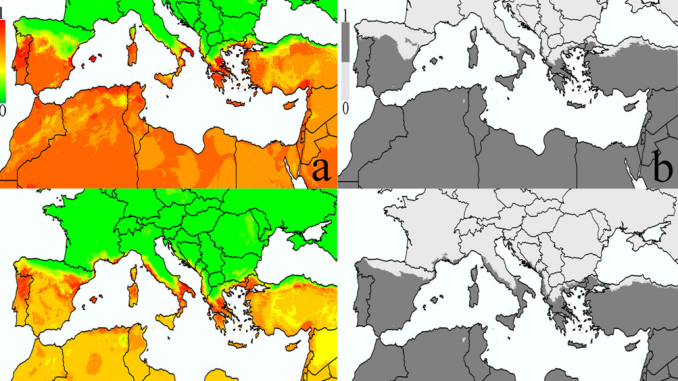
Abstract
Xylella fastidiosa is a xylem-limited gram- negative bacterium causing a high number of severe diseases to many agricultural and forestry plants. We developed a Maxent model to detect the current and future potential distribution of X. fastidiosa in the Mediterranean under climate change. For future projections, we used Hadley Centre’s HADGEM2- ES models for four representative concentration pathways (2.6, 4.5, 6.0 and 8.5) and two time periods (2050 and 2070). Maxent models achieved excellent levels of predictive performance as can be seen from AUC, TSS and AUCdiff values. The potential distribution obtained for the current time comprises Portugal, Spain, Italy, Corsica, Albania, Montenegro, Greece and Turkey as well as all countries of northern Africa and the Middle East. X. fastidiosa is not predicted to change its distribution in the Basin in response to climate change. Our study, however, highlights that X. fastidiosa may overcome the current boundaries outside Italy. Given the poten- tially high risk, we urge that the listed countries consider appropriate and preventive phytosanitary measures to avoid the introduction of the bacterium.

Be the first to comment